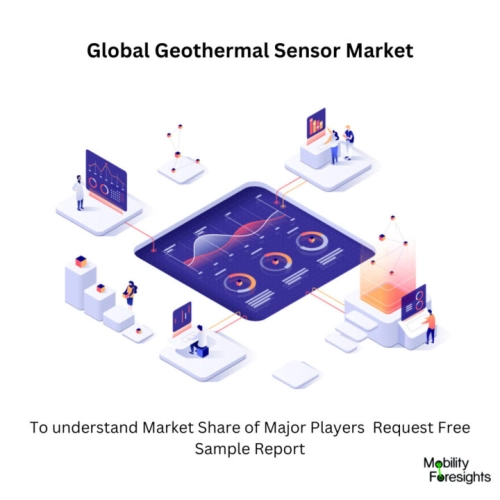
- Get in Touch with Us

Last Updated: Apr 26, 2025 | Study Period: 2024-2030
Various geothermal system parameters, including ground temperature, thermal conductivity, heat flux, and thermal diffusivity, can be measured using a geothermal sensor.
Geothermal sensors are often inserted into wells or boreholes that have been dug into the earth to measure the temperature and heat flow characteristics of the subsurface.
The design and operation of geothermal systems, such as geothermal heat pumps and geothermal power plants, are then optimized using the data gathered by these sensors.
Geothermal sensors come in a variety of forms, such as thermistors, thermocouples, resistance temperature detectors (RTDs), and fiber optic sensors. Depending on the exact application and measurement needs, each type has pros and cons.
Geothermal sensors are essential parts of geothermal systems because they supply the information required to guarantee the system's efficient and dependable operation. They are also used to track the system's performance over time and spot any problems or prospective difficulties before they happen.

The Global Geothermal Sensor Market accounted for $XX Billion in 2023 and is anticipated to reach $XX Billion by 2030, registering a CAGR of XX% from 2024 to 2030.
Baker Hughes Forms Consortium to Research Geothermal Energy Production Technologies for Abandoned Wells.
The geothermal energy partnership Wells2Watts, led by energy technology giant Baker Hughes, wants to convert non-productive oil and gas wells and dry non-productive geothermal wells into geothermal wells that can provide renewable electrical power.
The partnership seeks to quicken technological advancement and commercially scale geothermal as a baseload energy source with its industry partners.
The partnership will concentrate on how technology might retrofit a well that has reached the end of its useful life for the generation of renewable electricity and geothermal energy. The collaboration is concentrating on the potential of closed-loop geothermal technology in the foreseeable future.
The consortium, which is primarily supported by its business partners, also receives assistance from technology suppliers like Vallourec and GreenFire Energy through in-kind labour and material donations for construction, testing, and piloting.
The test well at the Baker Hughes Energy Innovation Centre, which is part of the Hamm Institute for American Energy in Oklahoma City, will be the focal point of the first consortium project, which aims to build the world's first closed loop geothermal laboratory.
The test well will recreate realistic subsurface conditions in order to validate engineering performance models, test the closed-loop system for a variety of well designs, and provide scale for field pilot projects.
| Sl no | Topic |
| 1 | Market Segmentation |
| 2 | Scope of the report |
| 3 | Abbreviations |
| 4 | Research Methodology |
| 5 | Executive Summary |
| 6 | Introduction |
| 7 | Insights from Industry stakeholders |
| 8 | Cost breakdown of Product by sub-components and average profit margin |
| 9 | Disruptive innovation in the Industry |
| 10 | Technology trends in the Industry |
| 11 | Consumer trends in the industry |
| 12 | Recent Production Milestones |
| 13 | Component Manufacturing in US, EU and China |
| 14 | COVID-19 impact on overall market |
| 15 | COVID-19 impact on Production of components |
| 16 | COVID-19 impact on Point of sale |
| 17 | Market Segmentation, Dynamics and Forecast by Geography, 2023-2030 |
| 18 | Market Segmentation, Dynamics and Forecast by Product Type, 2023-2030 |
| 19 | Market Segmentation, Dynamics and Forecast by Application, 2023-2030 |
| 20 | Market Segmentation, Dynamics and Forecast by End use, 2023-2030 |
| 21 | Product installation rate by OEM, 2023 |
| 22 | Incline/Decline in Average B-2-B selling price in past 5 years |
| 23 | Competition from substitute products |
| 24 | Gross margin and average profitability of suppliers |
| 25 | New product development in past 12 months |
| 26 | M&A in past 12 months |
| 27 | Growth strategy of leading players |
| 28 | Market share of vendors, 2023 |
| 29 | Company Profiles |
| 30 | Unmet needs and opportunity for new suppliers |
| 31 | Conclusion |
| 32 | Appendix |